Best and worst Soviet lenses. Review of lenses, produced in USSR. Features of use it on modern digital cameras. Helios, Zenitar, Industar, Jupiter lenses.
After buying a SLR or mirrorless digital camera with a kit lens that has mediocre optical performance many people think about purchasing their first non-complete lens in order to get that notorious bokeh (background blur). As usual beginners have no money for such purchase. And here there is a temptation to buy a Soviet lens on the secondary market, which seems to cost a little and the bokeh of such lenses is even more interesting than that of modern counterparts.
And if you plan to choose a Soviet lens to use it with a modern digital camera, then you need to keep in mind the following nuances (this is in addition to the need to purchase the appropriate adapter):
- It is difficult to use manual Soviet optics with SLR digital cameras, since the lenses of Soviet cameras were designed for a smaller segment – the distance from the rear lens to the light sensor. You will have to buy an adapter with a corrective lens, which will worsen the optical properties of the lens.
- You will have to focus manually, so if your camera does not have manual focus assistants such as focus picking or a focus area magnifier, then many of your pictures, especially at first, will go to waste.
- The lenses of old optical elements may be contaminated with engine oil or fungus, and such contamination may not be noticeable when buying a Soviet lens.
- Some old lenses designed for film cameras are equipped with aperture control levers (the so-called “automatic” or “jump”) and not all Soviet lenses have a switch that disables automatic aperture control. Therefore, with such a lens, you will either have to always shoot with an open aperture or lock (or reverse) the auto aperture control lever.
- All Soviet lenses have passport sharpness, which was designed for full-frame film cameras, and therefore the sharpness of all Soviet lenses is not enough for the resolution of the digital sensor of modern not only cropped (APS-C or micro 4/3) cameras, but even full-frame digital cameras with a sensor resolution of 20 MP or higher.
- Hucksters in the secondary market raise prices for high-quality Soviet lenses, so it’s not a fact that you will save money in this way.
- Well, the last. Despite the fact that the production equipment for the production of optics initially went to the Soviet Union during the property division by the allies of Nazi Germany, the lower level of production culture in the USSR and not all the achievements of the Germans were used properly, which negatively affected both the optical properties of Soviet lenses and their designs.
I entrusted the writing of an article about Soviet optics to a person who understands this issue better than me, so further narration will take place on his behalf. This is the author of the popular resource radojuva.com.

My name is Arkady Shapoval and I have passed through my hands an incredibly large number of various Soviet optics. I was asked to write an article about the five best and worst Soviet lenses. But the very wording of such an article is abstract. Soviet optics is very diverse. She exists:
- For SLR and rangefinder (mirrorless) cameras
- For narrow, medium and large format
- Film optics and photo optics
- Military and civil, technical optics (for example, for projectors, enlargers, overhead projectors, etc.)
- Optics of different factories, years of production and directions (for example, for export)
Mass Soviet optics and optics of the countries of the former CIS are most often associated with full-frame (narrow format) SLR lenses. It is about some of these popular solutions that I will write here.
It must be clearly and strictly understood that Soviet lenses received a second life due to the appearance of inexpensive digital SLR and mirrorless cameras, as well as thanks to the enthusiasm of many amateur photographers.
In general, I consider Soviet optics to be very weak. It has many critical issues:
- The mass character of optics had a very bad effect on its quality. Many Soviet lenses are very weak mechanically. So weak that after just 100 frames they can start to have serious mechanical problems. First of all, this is aperture sticking, oil on the aperture blades, aperture blades falling out, focus ring sticking and poor lens assembly tolerances.
- The difficulty of identifying a particular lens. For example, there are more than 50 different versions of Helios-44. There are more than 20 versions of the same Helios-81N. It is extremely difficult for the end user to understand the “zoo” of Soviet lenses. Often attackers take advantage of this and give out one lens after another. A particular example – lenses of the AUTOMAT series are sold under the guise of ordinary lenses. The problem is that all the lenses of the “Automatic” series cannot be adapted to modern cameras in a simple way. The same thing happens with lenses in variants for the Contax-Kiev RF mount.
- The age of optics also had a very bad effect on the quality of products that have come down to us. Finding a copy in good condition is getting harder and harder. Usually, almost all Soviet optics literally smells of old age. Often, a special lubricant was used to lubricate the helicoids, which has a specific odor.
- Old optical design. Many optical circuits are very outdated. Many of them are built on the pre-war developments of Carl Zeiss. Carl Zeiss technology was taken from defeated Germany as reparations (payment for war damage). The same legendary and well-known Helios-40 is a remake of Biotar 75/1.5.
- Many Soviet lenses have gained legendary status thanks to skilled photographers. The problem is that the beautiful photos that photographers have shown and show are more dependent on the skills of the photographer himself than on the quality of the lens. Many amateur photographers are psychologically prone to believing that the same lens can be used in exactly the same way. But this is self-deception. Separately, I want to highlight the contribution of the photographer Tigra Girl to the popularization of Helios-40. It is to her that the modern KMZ plant (now it is the ShVABE holding) should pay big money for being an ambassador.
Another hidden feature of Soviet optics is that there are practically no wide-angle lenses for modern cropped cameras. I am often asked what wide-angle lens to take on a cropped camera so that it is at least around 18 mm focal length, like, for example, kit lenses of the 18-55 / 3.5-5.6 class and at the same time has more advanced optical performance. But there are simply no worthy solutions from Soviet optics. More or less worthy and affordable wide-angle lenses start at 35 mm focal length, but on a 1.5x crop, such a FR already turns into a “standard” one (in terms of focal lengths).
I was asked to prepare a general summary table for Soviet lenses, but I do not see any point in this. Data on resolution in general does not play any role, since in the end it all depends on the particular instance that has survived to this day. Even the same lens, with the same name, produced in different factories, may have different data on resolution and other characteristics.
Some Soviet lenses have received their update and are still produced on the territory of modern Russia. So, for example, the legendary Helios-40 received bayonet options and minor updates. True, such modern solutions have a rather high price tag, and therefore I believe that this is just an attempt to cash in on old developments. I am extremely skeptical about such “updated” solutions. The whole world is doing something new, but in the countries of the former CIS they continue to resurrect the classics. I should note that the same Chinese industry offers a huge selection of lenses for ridiculous money and with very interesting optical characteristics.
The best USSR (Soviet) lenses
Helios-44-2 2/58

Made on the basis of Zeiss Biotar 2/58, M42 thread, very cheap fast aperture about fifty dollars. Very common, you can buy a bucket and choose the right one. Similar to other lenses of the Helios-44 family. Excellent serves as the first test of Soviet lenses. Sharp in the center, twists the background. Be sure to mention that the lenses of the Helios-44 series are the most mass-produced lenses in the world of all times and peoples.
Helios-81N 2/50
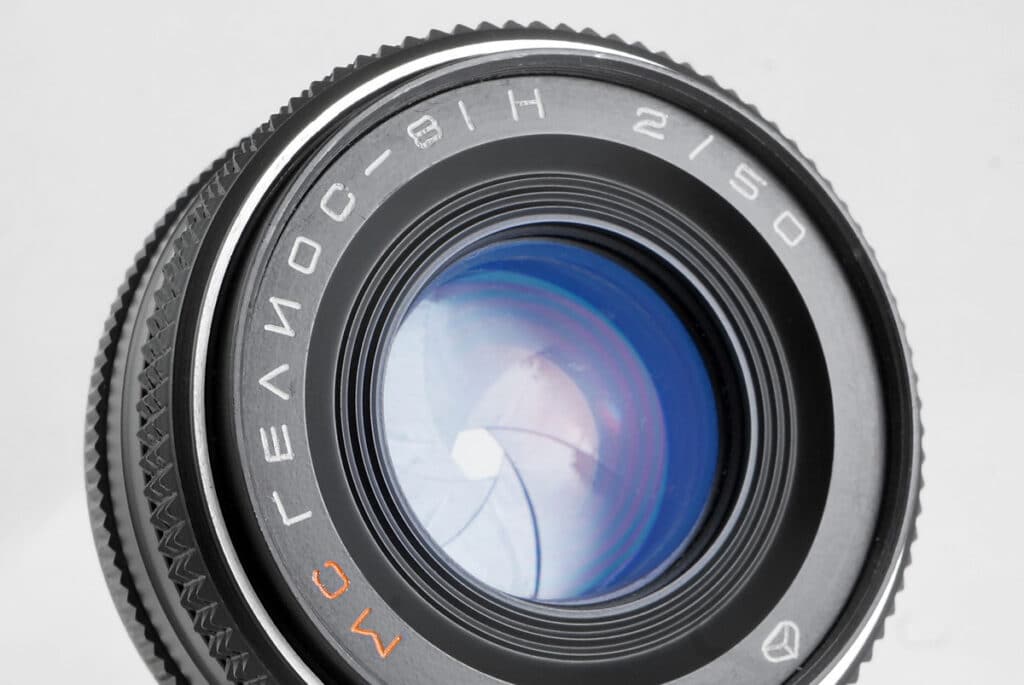
Made on the basis of Helios-65, compatible with the Nikon F mirror mount, which is why it has become very popular. True, there are many pitfalls. Sharp, compact, twists the background.
Jupiter-37A 3.5/135

Made on the basis of Zeiss Sonnar 3.5/135, uses a system of interchangeable lens mount (bayonet-adapters are easily searched for on M42 and Nikon F). A short TV with a nice picture. One of the best Soviet portrait lenses. Lots of aperture blades.
Helios-40 1.5/85

It is Helios 40-2 1.5/85. Made on the basis of Zeiss Biotar 1.5/75, M42 thread or mirror M39, legendary, strongly twists the background. Fairly high cost. Unusual field of sharpness. Most likely the most famous Soviet “creative” lens.
Industar-50-2 3.5/50
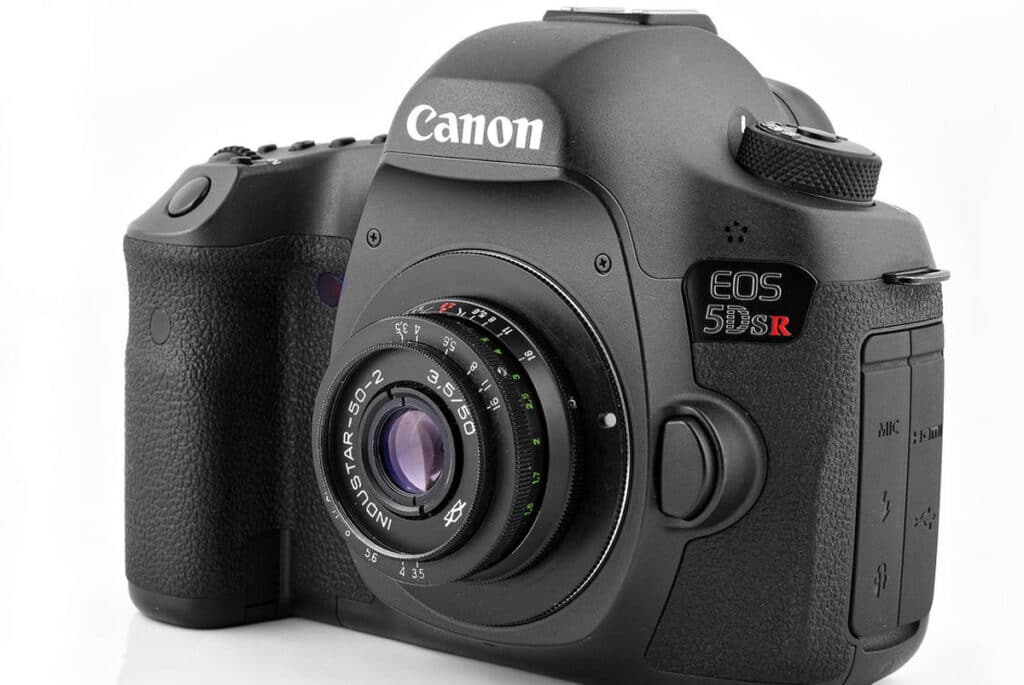
Made on the basis of Zeiss Tessar 3.5/50, M42 thread, very cheap, very compact, sharp in the center. Nice pancake. Inconvenient aperture control.
Tair-11A 2.8/135

Uses a system of interchangeable lens mount (bayonets are easily searched for on the M42 and Nikon F). A short TV with a nice picture. Lots of aperture blades. Also one of the best Soviet portrait lenses.
Jupiter-9 2/85
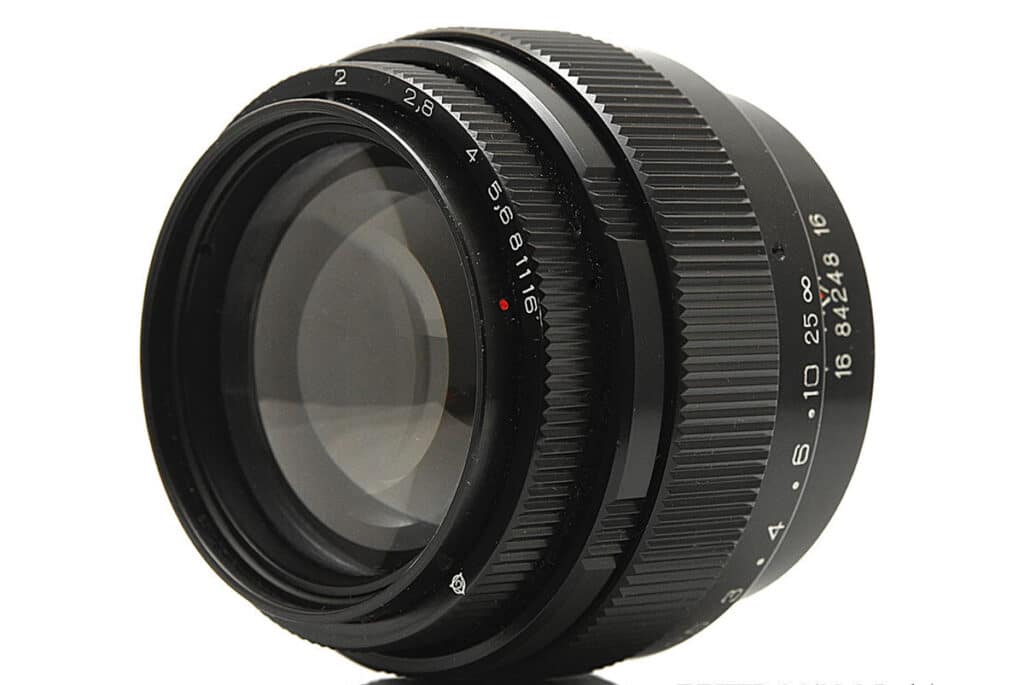
Made on the basis of Zeiss Sonnar 2/85, thread M42 or mirror M39. A good portrait, it is difficult to find a sharp specimen.
Jupiter-11A 4/135
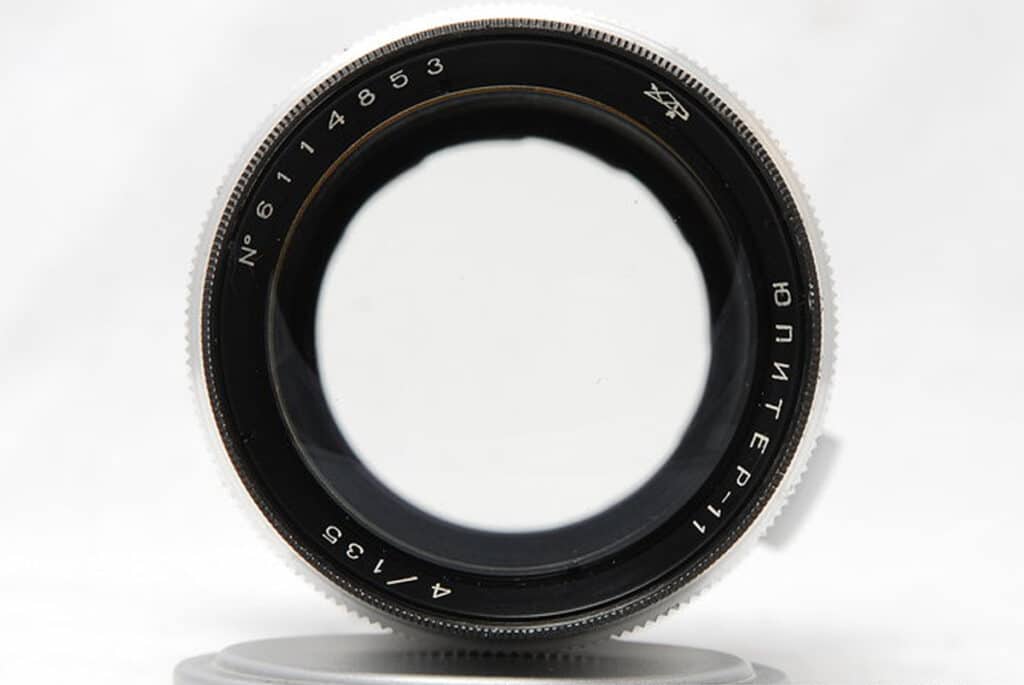
Made on the basis of Zeiss Sonnar 4/135, uses a system of interchangeable lens mounts (are easily found on the M42 and Nikon F). A short TV with a nice picture. An alternative for the more expensive Jupiter-37A. Lots of aperture blades.
Industar-61 LZ 2.8/50
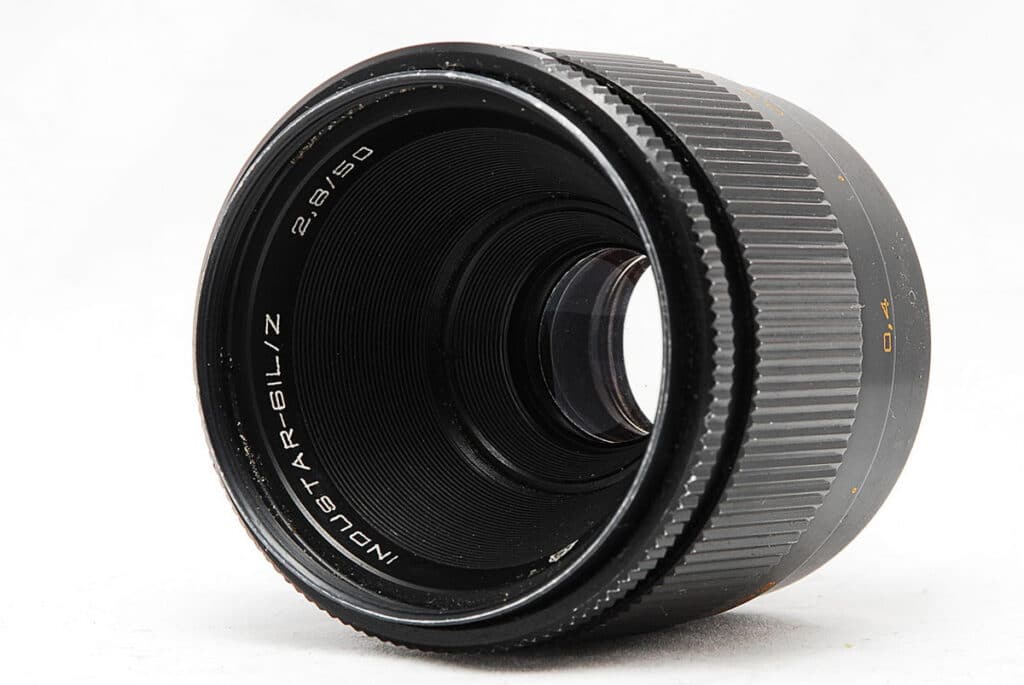
Made on the basis of Zeiss Tessar 2.8/50, M42 thread, sharp, often taken under macro rings for macro photography. Just a popular model.
Mir-1 2.8/37

Made on the basis of Zeiss Flektogon 2.8/35, usually M42 thread, available width. Optically weak, we love it for its soft pattern.
You can also separately note the popular models: Kaleinar-5n, Zenitar-M, Helios-77m-4, Mir-24N, Mir-10, Mir-20, etc.
The worst USSR (Soviet) lenses
There is only one step from the best to the worst. In the case of Soviet lenses, these are not just beautiful words, but a common truth. All the same TOP 10 best lenses can also be included in the TOP 10 worst lenses in the same way. All of them have their own problems, or oddities, or peculiarities. For example, from the “best” Soviet fifty dollars MS HELIOS-81N 2/50 to the “worst” Soviet fifty dollars MS HELIOS-81N 2/53 is just one step in the form of changing the marking ’50’ to ’53’. The 2/53 models are older and have very poor mechanics, combined with silver or copper aperture blades, all this makes it just a terrible lens. At the same time, that 50, that 53 are only conventions in the designation of the focal length, the real FR in all Helios-81 models is about 52 mm.
Or take Jupiter 9. The devil will break his leg until you find the option of the desired factory without defects, which is already sharp at f/2.0.
Even the “king” Helios-40 can be naked. It is interesting only at f/1.5, but with the aperture covered it becomes the usual 85, and even with a ninja star aperture. It weighs a lot and is not very convenient to use (especially early versions).
And there are plenty of such complexities and features. I do not know a single Soviet lens that would be at least good in all aspects.
What is good about Soviet similar lenses:
- Availability. Lenses are often very cheap. But, unfortunately, over time, prices for some of them have exceeded all reasonable limits. Many lenses are simply stored in the attic of many people and simply inherited.
- Ease of adaptation to modern digital cameras. It is enough to buy the necessary adapter and start creating.
- The special nature of the image. Most often, the character is associated with optical distortions. For example, the legendary “twisted bokeh” is the result of poorly corrected vignetting. Poor illumination often makes a picture with low contrast, prone to a lot of glare and flare, which ultimately stylizes the image “for film times”. Old optical schemes have their own characteristic recognizable bokeh, for example, planar or biotar or sonnar-shaped. Often such schemes suffer from spherical aberrations, which are almost completely cured in modern optics.
I am not a collector, but a practicing photographer who has access to many modern autofocus solutions. After any more or less modern lens, I don’t want to get involved with the old Soviet manual optics. However, I often shoot with Soviet lenses to create overviews or mini-projects. Of the latest similar “Autumn 2021” on Helios-81N and “Autofocus” Helios-44-m4.
With the help of old optical schemes, you can get photographs with their own unique character. True, in order to use this character well for artistic purposes, one must at least shoot well and skillfully. But for someone who shoots well, it is much easier to get a good result on something newer and more modern. Especially if it’s new has autofocus.
For owners of cropped mirrorless cameras, I recommend looking not at cheap old USSR lenses, but at cheap Chinese modern ones. Chinese manual lenses are almost 99% made up of solutions for mirrorless cameras.
Soviet optics, first of all, helps amateur photographers to touch fast fixes, which can cause euphoria after regular “dark” solutions.
I repeat, it is easiest to start getting acquainted with Soviet optics with a cheap Helios-44-2 2/58 (or any other class 2/58).
Thank you for your attention and good luck.
P.S. from the author of the site andrew-lazarev.com
Above, you read an article by Arkady Shapoval about Soviet optics. But as the author of the site, I also want to put my two cents into this topic.
Since I shoot on mirrorless cameras with a short distance, I am also interested in lenses from rangefinder cameras. I had experience using Jupiter-8 2/53 and Industar-61 L / D lenses. And I have nothing good to say about this experience – Jupiter-8 is not at all sharp, its bokeh is not interesting, and Industar-61 L / D is generally a shame for my city of Kharkov, in which this lens was produced at the FED factory. It seems that this lens was made with a hammer and chisel by drunk locksmiths of the lowest ranks…
My favorite Soviet lenses are the Helios 77m-4 1.8/50 and Helios 81N, which are sharp wide open and have a beautiful twisted bokeh pattern.
The 77M-4 is an automatic aperture lens, so for use with modern mirrorless cameras, you will need to reverse the aperture spring force.
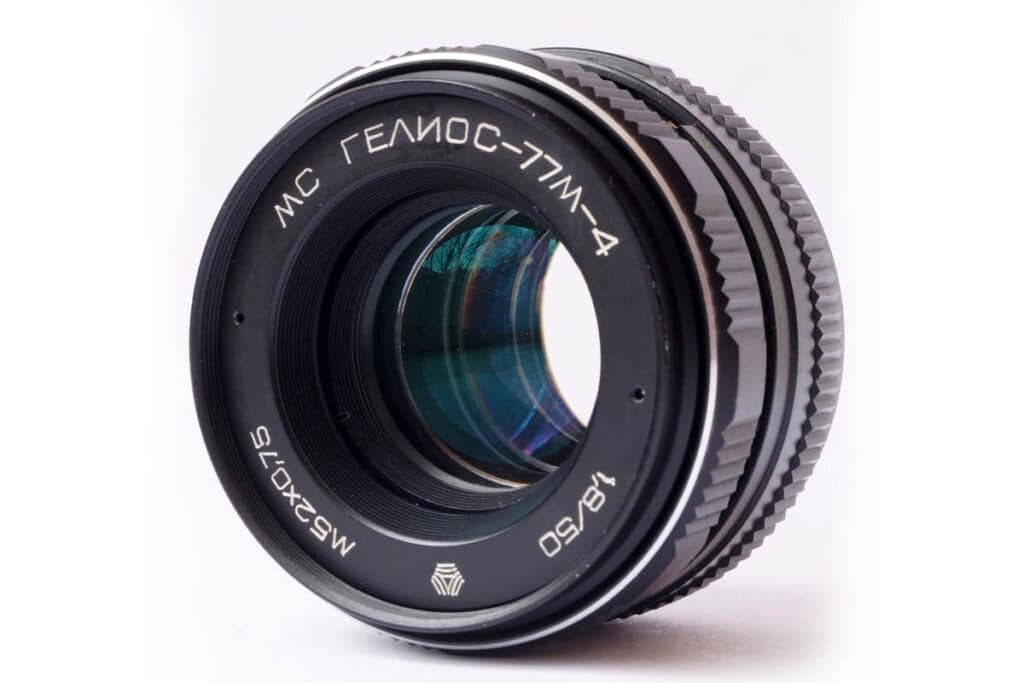
Another good lens produced in the USSR is the Zenitar-M. But unlike its bokeh-twisting counterparts, this is just a regular sharp lens, without any creative features.

Helios 1,8/53 is perhaps the most unusual of the Soviet lenses in the article. It is very compact and at the same time sharp in the open, with beautiful twisted bokeh. And even inexpensive in the secondary market. If not for one “but” – the lens mount. Or rather, its absence. To use it on modern mirrorless cameras, you will have to buy an “adapter” from the Contax-Kiev mount to your camera mount. And such an adapter will cost (much) more than the lens itself.

Well, I can’t resist the temptation and give a comparative table for my favorite Soviet lenses below.
Comparative table of characteristics of Soviet lenses
The comparison table shows the parameters of lenses from our rating:
- Helios 40-2
- Helios 77M-4
- Zenitar-M
- Helios 81N
- Helios 103.
| Feature / # of lens | 1 | 2 | 3 | 4 | 5 |
|---|---|---|---|---|---|
| Mount | М42, Nikon F, Canon EF | М42 | М42 | Nikon F | Contax-Киев |
| Focal length, mm | 85 | 50 | 50 | 50 | 53 |
| Max aperture | 1.5 | 1.8 | 1.7 | 2.0 | 1.8 |
| MFD, cm | 80 | 45 | 45 | 50 | 100 |
| Auto-aperture | — | ++ | + | + | — |
| Sharpness in the center | 36 | 45 | 43 | 52 | 55 |
| Sharpness in the corners | 17 | 25 | 24 | 27 | 28 |
| Blades of aperture | 10 | 6 | 6 | 6 | 9 |
| Diameter of filter, mm | 70 | 52 | 52 | 49 | 40.5 |
| Optical design, elements/groups | 6/4 | 6/4 | 6/5 | 6/4 | 6/4 |
| Weight, g | 950 | 250 | 280 | 214 | 150 |
The table shows the sharpness according to the lens passport, lines per mm.
Automatic ++ means that there is an auto / manual iris control switch.
Thanks to my wife for translate in to English!
Also read:
© 2022 Andrew Lazarev Production — Videographer, photographer in Kharkiv and Kharkiv region. Photographer’s blog. Videographer blog.
The best USSR (Soviet) lenses
Helios-44-2 2/58

Made on the basis of Zeiss Biotar 2/58, M42 thread, very cheap fast aperture about fifty dollars. Very common, you can buy a bucket and choose the right one. Similar to other lenses of the Helios-44 family. Excellent serves as the first test of Soviet lenses. Sharp in the center, twists the background. Be sure to mention that the lenses of the Helios-44 series are the most mass-produced lenses in the world of all times and peoples.
Helios-81N 2/50

Made on the basis of Helios-65, compatible with the Nikon F mirror mount, which is why it has become very popular. True, there are many pitfalls. Sharp, compact, twists the background.
Jupiter-37A 3.5/135

Made on the basis of Zeiss Sonnar 3.5/135, uses a system of interchangeable lens mount (bayonet-adapters are easily searched for on M42 and Nikon F). A short TV with a nice picture. One of the best Soviet portrait lenses. Lots of aperture blades.
Helios-40 1.5/85

It is Helios 40-2 1.5/85. Made on the basis of Zeiss Biotar 1.5/75, M42 thread or mirror M39, legendary, strongly twists the background. Fairly high cost. Unusual field of sharpness. Most likely the most famous Soviet “creative” lens.
Industar-50-2 3.5/50

Made on the basis of Zeiss Tessar 3.5/50, M42 thread, very cheap, very compact, sharp in the center. Nice pancake. Inconvenient aperture control.
Tair-11A 2.8/135

Uses a system of interchangeable lens mount (bayonets are easily searched for on the M42 and Nikon F). A short TV with a nice picture. Lots of aperture blades. Also one of the best Soviet portrait lenses.
Jupiter-9 2/85

Made on the basis of Zeiss Sonnar 2/85, thread M42 or mirror M39. A good portrait, it is difficult to find a sharp specimen.
Jupiter-11A 4/135

Made on the basis of Zeiss Sonnar 4/135, uses a system of interchangeable lens mounts (are easily found on the M42 and Nikon F). A short TV with a nice picture. An alternative for the more expensive Jupiter-37A. Lots of aperture blades.
Industar-61 LZ 2.8/50

Made on the basis of Zeiss Tessar 2.8/50, M42 thread, sharp, often taken under macro rings for macro photography. Just a popular model.
Mir-1 2.8/37

Made on the basis of Zeiss Flektogon 2.8/35, usually M42 thread, available width. Optically weak, we love it for its soft pattern.
You can also separately note the popular models: Kaleinar-5n, Zenitar-M, Helios-77m-4, Mir-24N, Mir-10, Mir-20, etc.
The worst USSR (Soviet) lenses
There is only one step from the best to the worst. In the case of Soviet lenses, these are not just beautiful words, but a common truth. All the same TOP 10 best lenses can also be included in the TOP 10 worst lenses in the same way. All of them have their own problems, or oddities, or peculiarities. For example, from the “best” Soviet fifty dollars MS HELIOS-81N 2/50 to the “worst” Soviet fifty dollars MS HELIOS-81N 2/53 is just one step in the form of changing the marking ’50’ to ’53’. The 2/53 models are older and have very poor mechanics, combined with silver or copper aperture blades, all this makes it just a terrible lens. At the same time, that 50, that 53 are only conventions in the designation of the focal length, the real FR in all Helios-81 models is about 52 mm.
Or take Jupiter 9. The devil will break his leg until you find the option of the desired factory without defects, which is already sharp at f/2.0.
Even the “king” Helios-40 can be naked. It is interesting only at f/1.5, but with the aperture covered it becomes the usual 85, and even with a ninja star aperture. It weighs a lot and is not very convenient to use (especially early versions).
And there are plenty of such complexities and features. I do not know a single Soviet lens that would be at least good in all aspects.
What is good about Soviet similar lenses:
- Availability. Lenses are often very cheap. But, unfortunately, over time, prices for some of them have exceeded all reasonable limits. Many lenses are simply stored in the attic of many people and simply inherited.
- Ease of adaptation to modern digital cameras. It is enough to buy the necessary adapter and start creating.
- The special nature of the image. Most often, the character is associated with optical distortions. For example, the legendary “twisted bokeh” is the result of poorly corrected vignetting. Poor illumination often makes a picture with low contrast, prone to a lot of glare and flare, which ultimately stylizes the image “for film times”. Old optical schemes have their own characteristic recognizable bokeh, for example, planar or biotar or sonnar-shaped. Often such schemes suffer from spherical aberrations, which are almost completely cured in modern optics.
I am not a collector, but a practicing photographer who has access to many modern autofocus solutions. After any more or less modern lens, I don’t want to get involved with the old Soviet manual optics. However, I often shoot with Soviet lenses to create overviews or mini-projects. Of the latest similar “Autumn 2021” on Helios-81N and “Autofocus” Helios-44-m4.
With the help of old optical schemes, you can get photographs with their own unique character. True, in order to use this character well for artistic purposes, one must at least shoot well and skillfully. But for someone who shoots well, it is much easier to get a good result on something newer and more modern. Especially if it’s new has autofocus.
For owners of cropped mirrorless cameras, I recommend looking not at cheap old USSR lenses, but at cheap Chinese modern ones. Chinese manual lenses are almost 99% made up of solutions for mirrorless cameras.
Soviet optics, first of all, helps amateur photographers to touch fast fixes, which can cause euphoria after regular “dark” solutions.
I repeat, it is easiest to start getting acquainted with Soviet optics with a cheap Helios-44-2 2/58 (or any other class 2/58).
Thank you for your attention and good luck.
P.S. from the author of the site andrew-lazarev.com
Above, you read an article by Arkady Shapoval about Soviet optics. But as the author of the site, I also want to put my two cents into this topic.
Since I shoot on mirrorless cameras with a short distance, I am also interested in lenses from rangefinder cameras. I had experience using Jupiter-8 2/53 and Industar-61 L / D lenses. And I have nothing good to say about this experience – Jupiter-8 is not at all sharp, its bokeh is not interesting, and Industar-61 L / D is generally a shame for my city of Kharkov, in which this lens was produced at the FED factory. It seems that this lens was made with a hammer and chisel by drunk locksmiths of the lowest ranks…
My favorite Soviet lenses are the Helios 77m-4 1.8/50 and Helios 81N, which are sharp wide open and have a beautiful twisted bokeh pattern.
The 77M-4 is an automatic aperture lens, so for use with modern mirrorless cameras, you will need to reverse the aperture spring force.

Another good lens produced in the USSR is the Zenitar-M. But unlike its bokeh-twisting counterparts, this is just a regular sharp lens, without any creative features.

Helios 1,8/53 is perhaps the most unusual of the Soviet lenses in the article. It is very compact and at the same time sharp in the open, with beautiful twisted bokeh. And even inexpensive in the secondary market. If not for one “but” – the lens mount. Or rather, its absence. To use it on modern mirrorless cameras, you will have to buy an “adapter” from the Contax-Kiev mount to your camera mount. And such an adapter will cost (much) more than the lens itself.

Well, I can’t resist the temptation and give a comparative table for my favorite Soviet lenses below.
Comparative table of characteristics of Soviet lenses
The comparison table shows the parameters of lenses from our rating:
- Helios 40-2
- Helios 77M-4
- Zenitar-M
- Helios 81N
- Helios 103.
| Feature / # of lens | 1 | 2 | 3 | 4 | 5 |
|---|---|---|---|---|---|
| Mount | М42, Nikon F, Canon EF | М42 | М42 | Nikon F | Contax-Киев |
| Focal length, mm | 85 | 50 | 50 | 50 | 53 |
| Max aperture | 1.5 | 1.8 | 1.7 | 2.0 | 1.8 |
| MFD, cm | 80 | 45 | 45 | 50 | 100 |
| Auto-aperture | — | ++ | + | + | — |
| Sharpness in the center | 36 | 45 | 43 | 52 | 55 |
| Sharpness in the corners | 17 | 25 | 24 | 27 | 28 |
| Blades of aperture | 10 | 6 | 6 | 6 | 9 |
| Diameter of filter, mm | 70 | 52 | 52 | 49 | 40.5 |
| Optical design, elements/groups | 6/4 | 6/4 | 6/5 | 6/4 | 6/4 |
| Weight, g | 950 | 250 | 280 | 214 | 150 |
The table shows the sharpness according to the lens passport, lines per mm.
Automatic ++ means that there is an auto / manual iris control switch.
Thanks to my wife for translate in to English!
Also read:
© 2022 Andrew Lazarev Production — Videographer, photographer in Kharkiv and Kharkiv region. Photographer’s blog. Videographer blog.
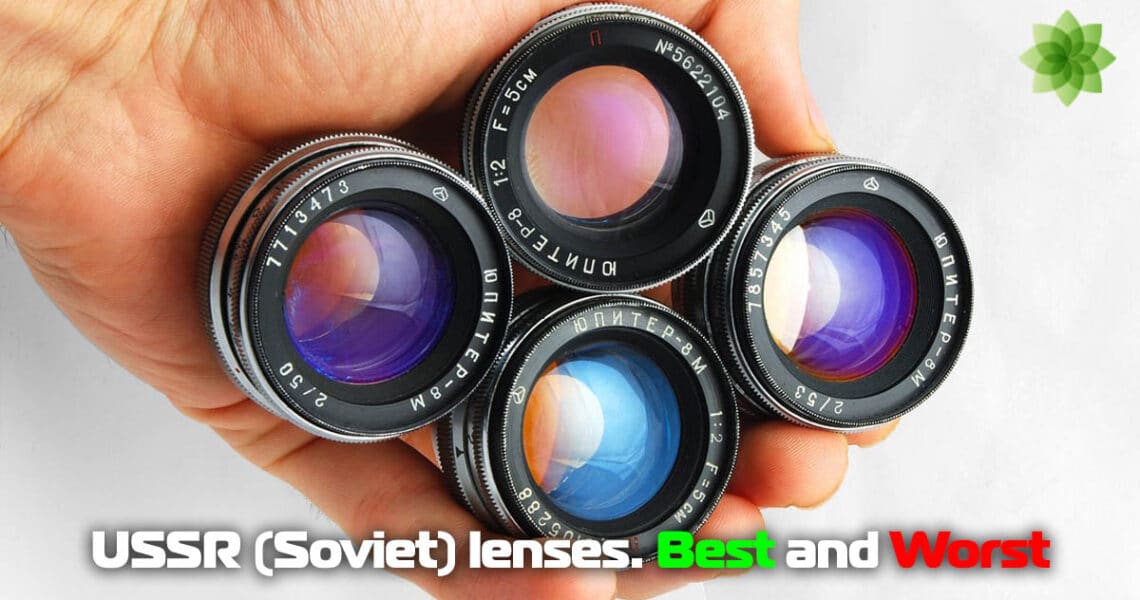

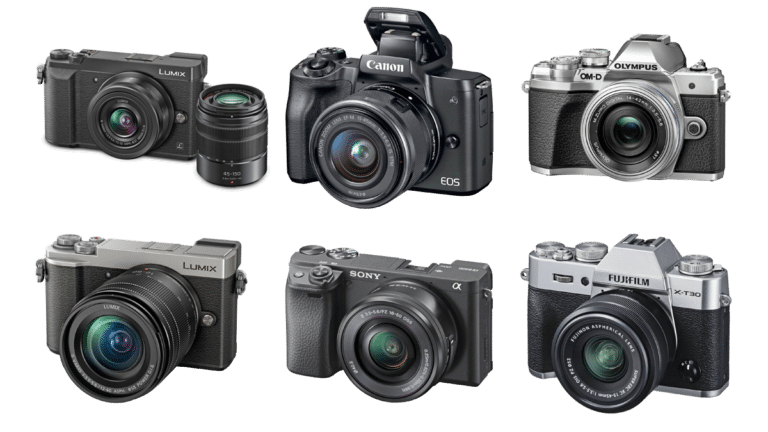
Hello,
I start actually using those former soviet lenses, I look for the manual of tair-33, I can’t find anything in the web 🙁
Do you know how to find?
Kind regards
Joerg
https://www.olx.ua/d/uk/obyavlenie/obektiv-tair-33-4-5-300-mm-IDQwB5U.html